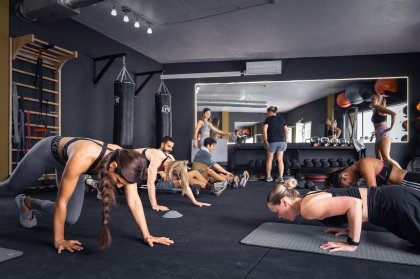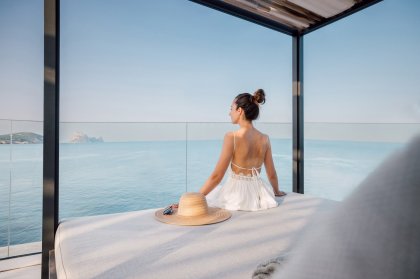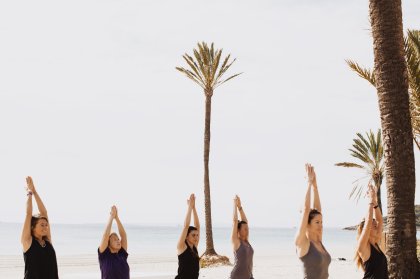Ibiza is blessed with diversity. This is one of the things that drew me here. I love the contrast here of party-goers and the chill-out crowd, North island and South, the West End or San Juan on a Sunday morning, cave-dwelling as opposed to the Ushaia Tower, rural and urban, partying and peace, busy and slow, locals and visitors all co-existing in relative harmony.
And so it is in the yoga world, a diversity of pace, styles, and belief systems from ascetic to hedonistic yet no matter your path in, all are about existing in peace, in harmony with yourself and others.
As there is something for everyone, at all stages of life in Ibiza, so it is in yoga.
Yoga is a practice for Life. Your practice changes as you change.

Hot Yoga:
Hot yoga is practiced in a room that is heated to a minimum of 37 degrees Celsius but goes up from there! Traditionally, Hot Yoga is based on the 26 posture sequence of Bikram yoga. There are offshoots of this style that mix up the sequence, and add more poses but in general, the same sequence is done every class.
This practice is excellent for giving a practitioner a sense of progress in their practice. Both Hot and Ashtanga yoga's repetition of poses can be very soothing for people who experience anxiety or need an experience of certainty in their life. This practice is good for those who feel themselves inflexible as the heat can loosen the muscles.
The practice generally uses mirrors so you can see your alignment compared to others and register visually the shifts you make in your poses. Hot yoga practitioners feel the heat has a detoxifying effect and this style is great for immediate rapid weight loss.
Ashtanga Vinyasa:
Ashtanga Vinyasa is a practice taught initially by K. Prathabhi Jois.
Like Bikram Yoga this style is practiced in a heated room and there is a set series so the benefits experienced are similar. Ashtanga consists of many more poses but one may not progress through the series without mastering the poses sequentially. This practice emphasizes breath linked to movement and counting of breath in held poses.
People who love Ashtanga appreciate the discipline as this style demands a daily practice and is a rigorous physical experience. There is a strong component of self-practice to this style. Ashtanga is a traditional Indian style so it involves, pranayama, mantra, bandhas and a meditation emphasis as well as the poses.
One benefit of this style is that no matter where you are in the world you will have a consistant experience if you take a class. As well, Ashtanga is famous for producing muscular physiques as the practice demands a lot of strength.
The two most famous offshoots of Ashtanga yoga are:
Vinyasa Flow Yoga:
Vinyasa flow yoga typically denotes a fast paced practice, flowing from pose to pose in co-ordination with breath. The emphasis is on the breath and the relationship to breath and movement much more so than on alignment in the poses as evinced in Iyengar and some Hatha Yoga. Each teacher develops their own sequence and many teachers will play music in their classes.
Vinyasa Flow is teacher dependent. It can be laid back or it can be very demanding. People like Vinyasa flow because it is creative, physically challenging and the quicker pace creates a strong experience of meditation in movement. Though the fast pace makes it harder to spend time working on a pose that is not coming easily, Vinyasa Flow can be a reflection of life where we do not have time to practice our reactions. We do the best we can in our practice, and in our life, in a yogic way, cultivating mindfulness and moving on to the next experience.
Next week we explore Power Yoga, Jivamukti Yoga and Hatha Yoga.
Maili Dinim is a Yoga Instructor and Natural Food Chef. She can be contacted via MailiDinim.com







